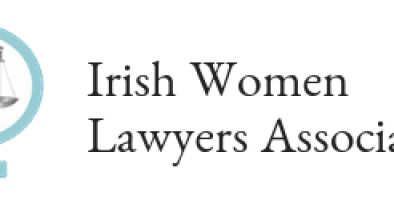‘Startling’ gender pay gap of up to 61 per cent at top Irish law firms

Women at Ireland’s largest law firms are earning up to 61 per cent less than their male colleagues, figures released under Ireland’s gender pay gap reporting law suggest.
All businesses with more than 250 employees were required by law to publish a report by the end of December 2022 with information about their gender pay gap on a “snapshot” date in June 2022.
Irish Legal News analysed data from Ireland’s six largest law firms by solicitor numbers — Matheson, A&L Goodbody, Arthur Cox, McCann FitzGerald, Mason Hayes & Curran and William Fry — which reveals pay gaps ranging from 61 per cent to 40 per cent when equity partners are taken into account.
The figures have been described as “startling” by Aoife McNicholl, chairperson of the Irish Women Lawyers Association (IWLA).
Equity partners at law firms are self-employed and so do not come within the ambit of the Gender Pay Gap Information Act 2021, but each of the firms voluntarily provided data concerning partners’ remuneration in their reports.
The pay gaps are substantially larger when partners are included because most partners at the firms are men — something all of them said they are committed to addressing by promoting gender balance in future rounds of appointments and promotions.
However, even when partners are excluded, one of the six firms reported a pay gap which outstrips the 11 per cent figure reported as the Irish national average in 2018, the latest year for which data is available.
Matheson LLP reported a mean pay gap of 61 per cent and a median pay gap of 24 per cent when partners are included. When partners are excluded, the firm’s mean pay gap is 15 per cent and the median is six per cent.
In its report, Matheson highlighted the impact of family leave on its figures. The firm reported a mean bonus pay gap of 42 per cent and a median bonus pay gap of 59 per cent, which it said reflected the fact that women at the firm were more likely to avail of family leave and therefore receive a pro-rata reduced bonus.
When bonus payments and equity partners are excluded, Matheson said its mean hourly pay gap was -1.5 per cent, meaning women earned slightly more than men.
A&L Goodbody reported the largest mean pay gap of 64 per cent when all partners are included and did not publish an equivalent median figure. When equity partners are excluded, the firm’s mean pay gap is 21 per cent and the median is 23 per cent; when all partners are excluded, the mean is 10 per cent and the median is 19 per cent.
The firm also reported a mean bonus pay gap of 42 per cent and a median bonus pay gap of 35 per cent. Almost two-thirds (63 per cent) of men at the firm received a bonus against only 55 per cent of women.
Arthur Cox had a mean pay gap of 52 per cent and a median pay gap of 17 per cent when partners are included, and a mean pay gap of one per cent and a median pay gap of two per cent when partners are excluded.
The firm said its bonus pay gap was a mean of 39 per cent and a median of 31 per cent when equity partners were included, or 11 per cent and 26 per cent when excluded. “Calculating the gender bonus gap excluding our equity partners highlights that we still have employee gender bonus gaps that we need to address,” it noted.
McCann FitzGerald reported a mean pay gap of 52 per cent and a median pay gap of 37 per cent when partners are included, and a mean of nine per cent and a median of three per cent when partners are excluded.
The firm’s bonus pay gap figures only cover employees, i.e. excluding equity partners, and show a mean gap of 40 per cent and a median of seven per cent. In its report, it said a “substantial reason” for the bonus pay gap is the “greater proportion of women in non-solicitor roles which are ineligible for an annual solicitor performance bonus”.
Mason Hayes & Curran reported a mean pay gap of 50 per cent and a median pay gap of 24 per cent when partners are included, and a mean pay gap of three per cent and a median pay gap of 15 per cent when partners are excluded.
More than three-quarters (77 per cent) of women at MHC received a bonus compared to less than two-thirds (63 per cent) of men, but there remained a 44 per cent mean bonus pay gap and a 39 per cent median bonus pay gap.
William Fry reported a mean pay gap of 40 per cent when partners are included and did not publish an equivalent median figure. When partners are excluded, its mean pay gap was -0.3 per cent and its median pay gap was -11 per cent.
It reported a five per cent mean bonus pay gap and a 30 per cent median bonus pay gap, which it attributed to the “concentration of females in business support roles where bonus is not related directly to achievement of financial or business development targets”.
The six firms were chosen for analysis as they were the only law firms with more than 200 practising solicitors according to data published by the Law Society Gazette last year.

Aoife McNicholl, IWLA chairperson
Ms McNicholl told Irish Legal News: “We have long known there is a gender pay gap but this is the first time we have had the data to evidence it and now it is indisputable. The figures tell the story of the attrition of women from the workplace and the unbalanced distribution of caring responsibilities.
“We know what causes the gender pay gap, so our collective responsibility now is to work towards reducing it. IWLA’s focus for this year is financial wellbeing for women and part of that is to promote ways in which the gender pay gap can be reduced.
“Equal provision of maternity/paternity and encouraging the equal division of parental leave, affordable childcare, flexible working and an awareness of and willingness to challenge subconscious bias are some of the places to start.”
She added: “These figures are salutary — they act as a marker to enable firms to monitor their progress and IWLA looks forward to seeing that reflected in the data next year.”










